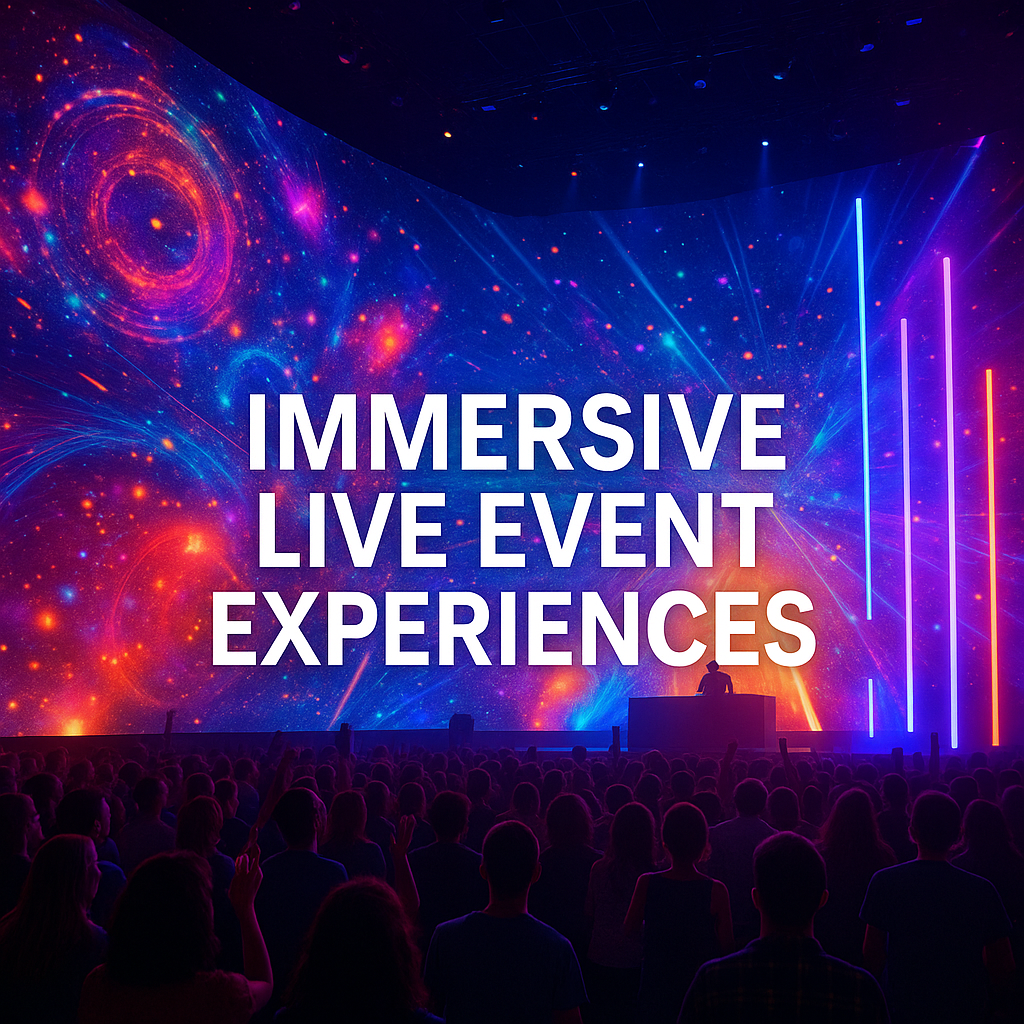Audiences today no longer settle for passive attendance—they want to be actively engaged. The most successful live events now offer immersive, multi-sensory experiences designed to captivate guests on every level. Organizers, brands, and agencies are compelled to deploy innovative approaches that engage modern audiences throughout the entire experience. For event professionals seeking inspiration and execution partners, Frontrowgroup.com offers insight into these new standards of live engagement, helping organizations stand out in the ever-evolving world of live experiences.
Audiences today seek more than just spectacle; they prioritize innovation, personalization, and emotional engagement in events like concerts and branded experiences. Organizers must integrate storytelling with advanced technology to maintain audience interest. The shift towards multi-sensory engagement and tailored designs underscores the necessity of merging creativity with technology to create meaningful and inclusive experiences. To foster loyalty and lasting impact, event creators must continually adapt and refine their strategies.
Table of Contents
Embracing Advanced Technologies
Next-generation venues, such as Sphere in Las Vegas, showcase what’s possible when technology and creativity converge. The Sphere’s jaw-dropping 16Kx16K LED display wraps attendees in vivid landscapes, while the HOLOPLOT-powered Sphere Immersive Sound personalizes every auditory detail, breaking new ground for sensory immersion. Such environments not only spark wonder but also raise the bar for what audiences will expect from every live event.
Projection mapping and AR are making venue transformations more dynamic and interactive than ever. Organizers now harness these technologies to create worlds that are both fantastical and hyper-realistic, blurring the lines between digital and physical experiences. The 2025 Schlagerboom pop music festival in Munich, for example, surrounded its guests with a kinetic “sea of light” using interactive LEDs and AR overlays, establishing a new model for visually immersive entertainment.
Personalizing Experiences with AI
AI-driven personalization is quickly becoming an industry must-have. Media production companies utilize artificial intelligence to analyze real-time audience data and dynamically tailor content. From personalized visuals to music and interactive game elements, AI enables experiences that feel uniquely tailored to each guest’s preferences and behaviors. These advancements encourage participation and deepen the sense of individual connection to the event’s narrative.
Crafting Compelling Narratives
While technology provides remarkable tools, unforgettable events are ultimately built around compelling stories. Immersive experiences that thread strong narratives through interactive installations, performances, and visual elements resonate on a deeper emotional level. Story-driven events guide audiences through unique journeys, evoking lasting inspiration rather than fleeting spectacle. Crafting these narratives often involves collaboration among writers, directors, production designers, and technologists, demonstrating that creativity and technology work best in tandem.

Designing Multi-Sensory Environments
The most memorable live experiences activate all the senses. Spatial audio places soundscapes around guests, while tactile and olfactory effects (like scented air or dynamic textures) heighten immersion. Activations, such as New York’s “Perk Up Salon” pop-up, deliver rich engagement by integrating vibrant visuals, interactive activities, and multisensory touchpoints. These approaches help marketers tap into the full spectrum of perception, making events more impactful and memorable.
Ensuring Accessibility and Inclusivity
A truly immersive experience is one everyone can enjoy. Leading event planners prioritize accessibility through thoughtful venue design, multilingual content, clear communication, and support for guests with sensory sensitivities. These considerations open the door to broader audiences and foster a sense of belonging, making events more successful, inclusive, and resonant with their attendees. Event teams should review guidance from inclusion advocates and consult best practices from organizations like the National Public Radio on inclusive music events.
Measuring Impact and Gathering Feedback
The pursuit of continual improvement relies on robust measurement and honest feedback. Post-event surveys, live polling, social media engagement analysis, and direct observation enable organizers to assess emotional responses, satisfaction levels, and areas for improvement. Insights gathered from these sources inform future strategy, contributing to a cycle of innovation and audience-led evolution.
Infusing live events with creativity, advanced technology, and human-centered design ensures today’s audiences are not just passive observers but active, emotionally engaged participants. As these trends take hold, immersive live experiences are poised to become the future of memorable entertainment.


